10 Tactics for Life Cycle Optimization

Traditionally, merchants have subscribed to the theory that prospects start at the large opening of a funnel and move down the narrow end as they are effectively provided more information or gather what they need to make decisions. The death of the sales funnel is a popular topic these days, as both B2B and B2C shopping habits have changed.
The purpose of this article isn't intended to stir up that heated debate but, rather, provide actionable advice on how to engage consumers as they consider, purchase and advocate your products - whether their journey does in fact still mimic a funnel or if has become linear, circular or, well, diamond shaped.
The fact is your prospects have many choices and providing them with a relevant, intuitive experience wherever they are in their interactions with your company should be your biggest concern.
Discover 10 ecommerce tactics for life cycle optimization.
Consideration Phase
1. Lead Nurturing
Perhaps the single most advancement in life cycle optimization is that of marketing automation, which essentially makes marketing more effective. Website Magazine recently published an updated Big List of Marketing Automation Software that details more than 20 solutions to consider. HubSpot, mentioned in that list, offers a Workflow tool designed to build a base of engaged contacts and then nurture them with quality, relevant content. The "subscriber nurturing recipe" below gathers all contacts at the subscriber lifecycle stage and sends them automated emails in an attempt to turn them into leads.
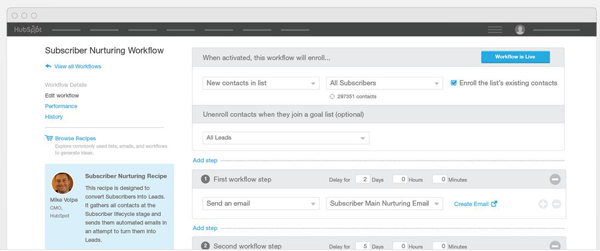
2. Customer Speak
Ratings and reviews help customers make informed buying decisions, increasing sales and building brand loyalty. Bazaarvoice's Conversations is a leading platform to help retailers provide consumers with the information they need to convert. Here's how it works:
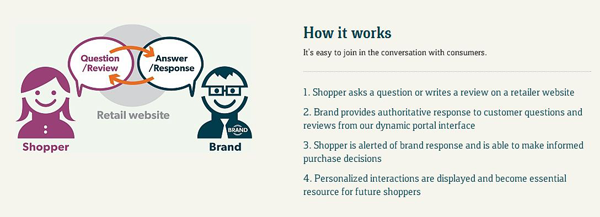
While one of the most popular, Bazaarvoice is far from the only ratings and reviews solution offered on the 'Net. For example, Yotpo reviews - which can be integrated with the Bigcommerce platform or alone - is free and offers plug and play installation and full customization. Yotpo offers a moderation tool that gives companies full control over the data and also provides an Auto Email feature that sends post-purchase emails to encourage review writing. What's more, reviewer's social identity and professional scores are shown next to their reviews to build trust. Here's a real-world example from www.carbonfibergear.com:
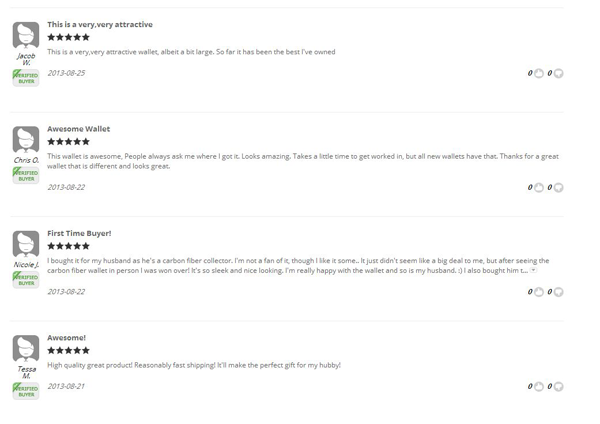
3. Comparison Shopping
Getting in front of customers is vital in the consideration phase and comparison-shopping engines can help jumpstart 'Net businesses. Acquiring "ready" buyers can come at a cost, however. Check out Vendio's contributed piece on "10 Things to Know Before Selling Online."
That said, it's not enough to just list products on feeds, merchants also need to ensure their offerings are marketed correctly and are in front of the "right" audience to get conversions and, hopefully, repeat buyers (thus optimizing the buyer life cycle). The Wyomind Data Feed Manager, which integrates with Magento, offers intuitive error checking, highly rated support and works with all the feeds an Internet retailer would want to create to ensure products are marketed/published correctly across networks.
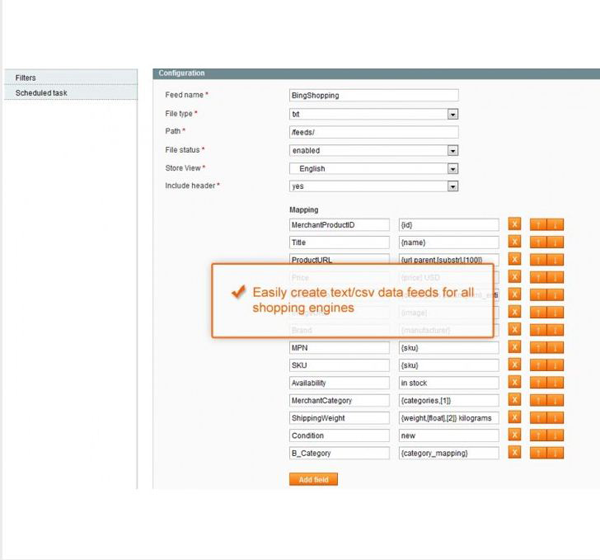
4. Trust & Privacy
Today's shoppers know their information is being collected, but they want to ensure it's being done securely. Trust and privacy seals send a subconscious message that a website is safe to do business with. Brands like Nike, GAP, Apple and Avis (see below) turn to TRUSTe to build trust and reduce privacy risks. TRUSTe's Certified Privacy Seal is recognized by both consumers and businesses as a signal that a website is adhering to privacy best practices.

Although TRUSTe might offer the most robust offerings (and increasing their market share in a big data environment), it's far from the only trust seal available.
Purchasing Phase
5. Customer Support
Live chat has come a long way (baby). Real-time customer support can now deliver a more personal experience that not only engages customers and helps to build trust, but when live chat is done well, it can increase sales and average order values.
Kayako is one software solution that has really upgraded its live chat software to include different features that optimize a customer's life cycle. For instance, Kayako Engage incorporates live chat, real-time visitor tracking, click-to-call and chat routing. As for the latter, companies can configure visitor rules to group and route chats to the "right" teams automatically. This can reduce customer frustration, as they are speaking to the person who has the information to help them make a purchasing decision.

6. Guest Checkout
What is more important for a merchant, that a shopper creates a username and password and opts into future messages or that they make the sale? Consider this, by allowing customers to enter minimal details, the more likely it is they will have a frictionless checkout experience. By providing a topnotch user experience after the sale (e.g. on-time shipping, stellar customer support, etc.), merchants can win over "guests." Opencart is one the many shopping cart systems that support guest checkout.
What may be even more appealing to merchants is a Magento extension that is designed to convert guest checkout customers to registered customers. The way it works is that passwords are auto-generated and emails (see below) are automatically sent using the information that was entered during the checkout procedure.
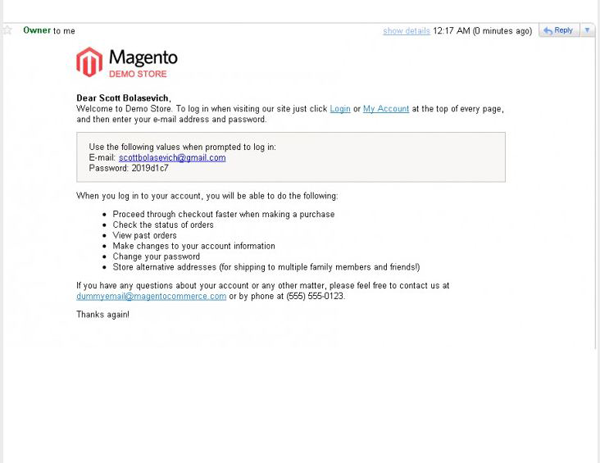
Advocating
7. Surprise & Delight
In today's digitally driven world, hand-written notes carry more weight (literally) than social media posts, text messages or emails. They indicate that a person (or employee behind a brand) has taken the time to personally think of them or thank them.

8. Loyalty Program
Creating brand advocates is half art and half digital science. There are myriad loyalty solutions available that can help increase engagement among prospective and existing shoppers. PunchTab, BellyCard and Perka are just a few viable options. The latter, is a mobile loyalty platform that is based on rewards. With Perka, customers get perks and increased status as they visit a merchant more often. For the Web, there is also 500friends. Here's how it works:

9. Content Marketing
From email to blogs to social, content marketing can not only humanize a brand, but also keep consumers engaged and increase repeat visits. For example, merchants can take advantage of the emerging benefits Pinterest is offering ecommerce retailers. Having a presence on the social network is increasingly attractive with features like rich pins. Pinterest states that tens of millions of pins have price details on them and now a new service will alert users via email when there has been a price drop on something they've pinned.
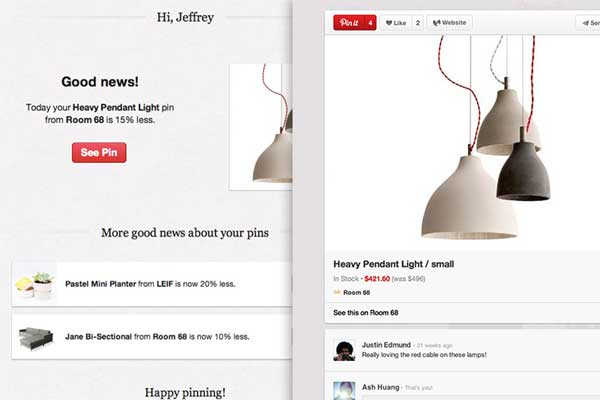
As for blogging for ecommerce, it's never too late to start, as was detailed last year in a two-part series on the subject.
10. Managing Expectations
While all brands want to exceed customer expectations, sometimes it just comes down to managing them. For instance, consumers expect near real-time response from brands on Twitter. Companies take very different approaches to combat this. @VirginAmerica, for example, states, "Although we won't address specific guest service issues on Twitter, our team of experts is eager to help you at vgn.am/GstHlp or call 1-877-359-8474." Nordstrom also includes a phone number on their Twitter profile, whereas UPS's support handle @UPSHelp includes hours of customer support operation on the social network.
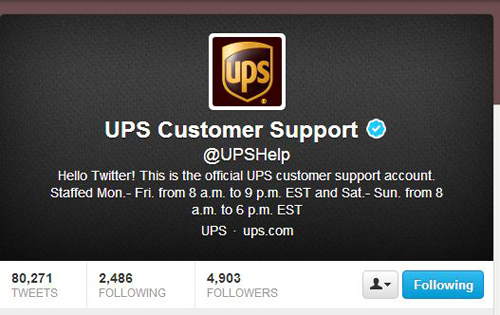
Managing customer expectations is also important when it comes to delivery times, communications, product descriptions and the list goes on.
When it comes to optimizing the customer life cycle, it's imperative to provide detailed, relevant and engaging information at every stage.

Subscribe to Our Newsletter!
Latest in Marketing









